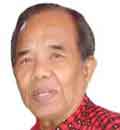Read this in The Manila Times digital edition.
Conclusion
There is no denying that President Duterte has succeeded in lifting the country from the sorry state he found it in at the beginning of his term. Now that his term is ending, the urgent question that he must be facing is how to sustain well into the next administration the enormous gains he has achieved for the country. The term limit imposed by the Constitution for president actually makes for one of acute maladies of the Philippine political system. Before the Cory Constitution of 1987, what was in place was the 1973 Constitution, which replaced the martial law rule, and before this, the 1935 Constitution under which the military regime of President Ferdinand E. Marcos Sr., beginning 1972, was established. This Constitution provides for a four-year term of office of the president with reelection but for a period not exceeding eight years; hence only one reelection. When the 1973 Constitution came into place, that term limit was fixed at six years without reelection. Such term limit was arrived at as a compromise thus: four years is too short for a good president whereas eight years is too long for a bad one. The fallacy in this criterion is that governments are not judged on whether a president is good or bad, but on what programs beneficial to the people he has crafted and dutifully implemented. If this were to be the guidepost for choosing a president, the elements of "goodness" or "badness" don't figure. Rather of paramount importance is that he is in the best position to continue the work of good government begun earlier than his term or even way back from his term.
Continue reading with one of these options:
Ad-free access
P 80 per month
(billed annually at P 960)
- Unlimited ad-free access to website articles
- Limited offer: Subscribe today and get digital edition access for free (accessible with up to 3 devices)


